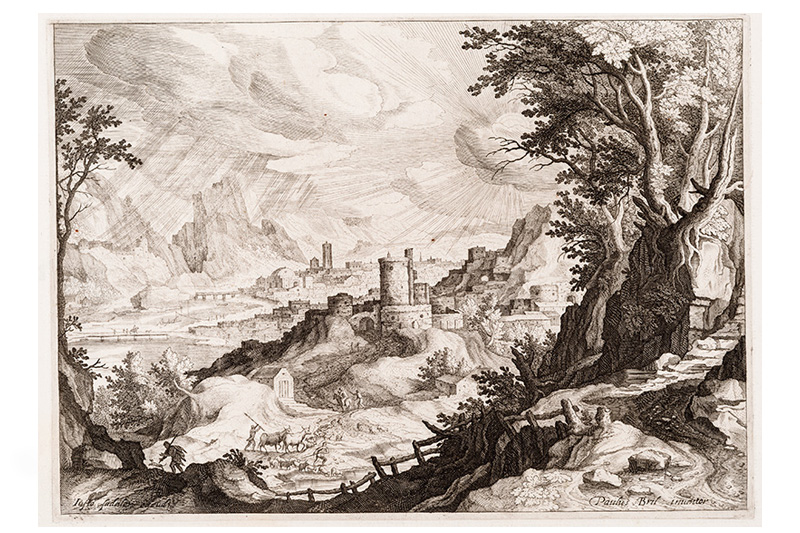The Collectors’ Cosmos
Exploring The Meakins-McClaran Print Collection
By Dee Raffo
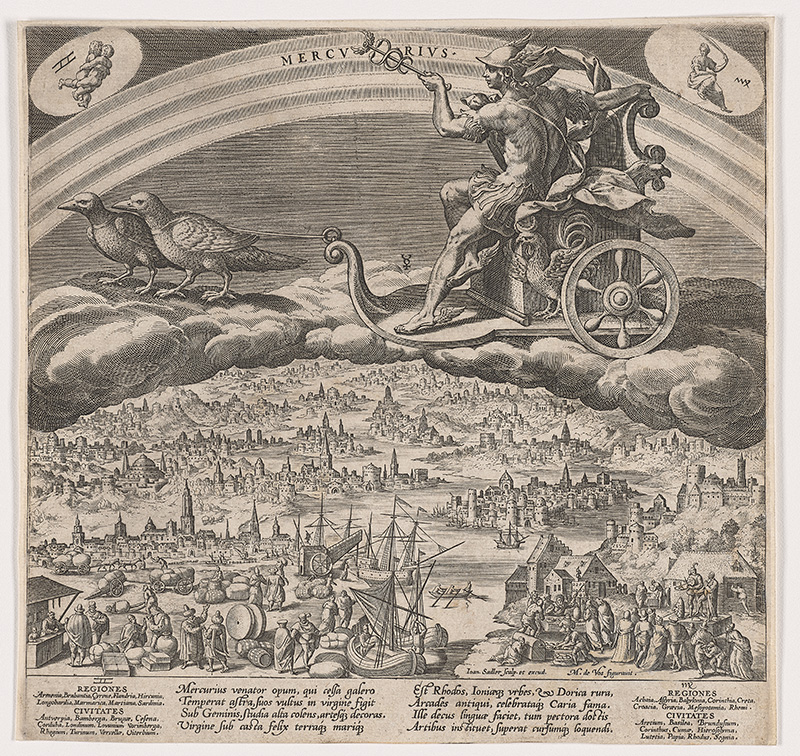
Jan Sadeler I after Maarten de Vos, The Seven Planets: Mercury, 1585, engraving, 23.5 × 24.6 cm.
Collection of Dr. Jonathan Meakins and Dr. Jacqueline McClaran
Photo: NGC
L
ocated in Whistler Village, the Audain Art Museum (AAM) has a paradoxical presence — it is both in harmony with its evergreen environs and visually striking amongst it. Built in 2016 by the internationally renowned Patkau Architects, it houses the world’s finest collection of Northwest Coast First Nations masks. It’s also well known for its extensive Emily Carr collection, works by post-war British Columbia modernists such as E.J. Hughes and Jack Shadbolt, and contemporary artists including Jeff Wall and Dana Claxton, among others.
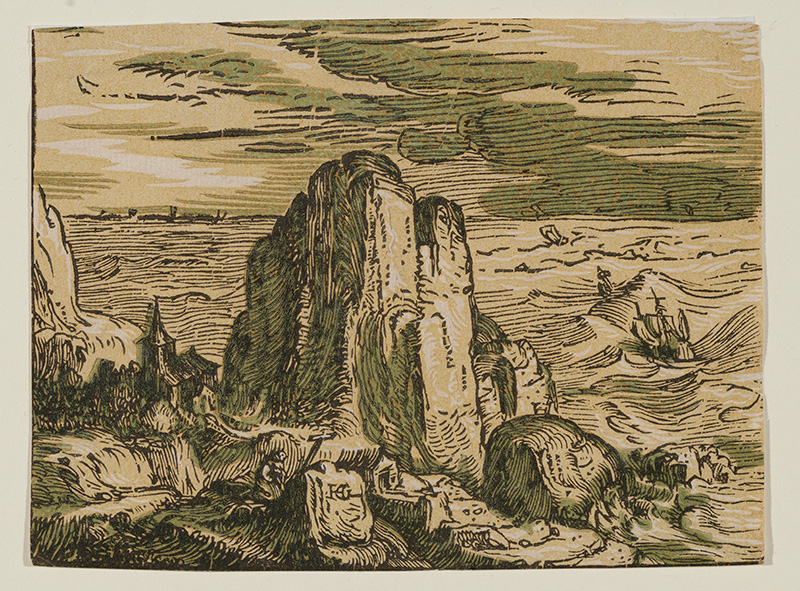
Hendrick Goltzius, Cliff on a Seashore, c. 1597–1600, from Four Small Landscapes, chiaroscuro woodcut,
line block and two-tone blocks in tan and green, plate: 10.7 × 14.2 cm; trimmed to platemark.
Collection of Dr. Jonathan Meakins and Dr. Jacqueline McClaran
Photo: Denis Farley
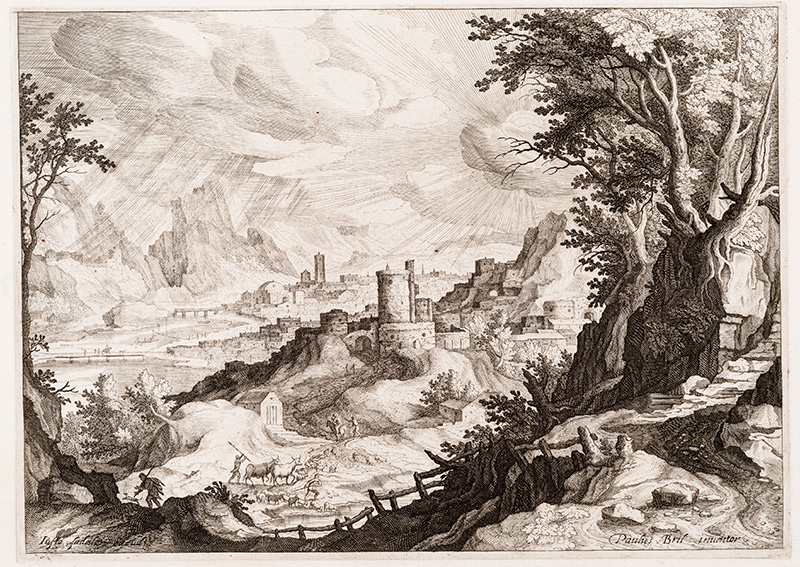
Justus Sadeler after Paul Bril, A Landscape with a Town in the Distance, 1600–20, engraving,
plate: 19.7 × 27.4 cm; sheet: 28.5 × 37.7 cm.
Collection of Dr. Jonathan Meakins and Dr. Jacqueline McClaran
Photo: Denis Farley
Three times a year, the museum’s permanent collection is complemented by special exhibitions, such as the current visit of The Collectors’ Cosmos: Exploring The Meakins-McClaran Print Collection. On loan from the National Gallery of Canada (NGC) in Ottawa, it will hang at the AAM until May 15.
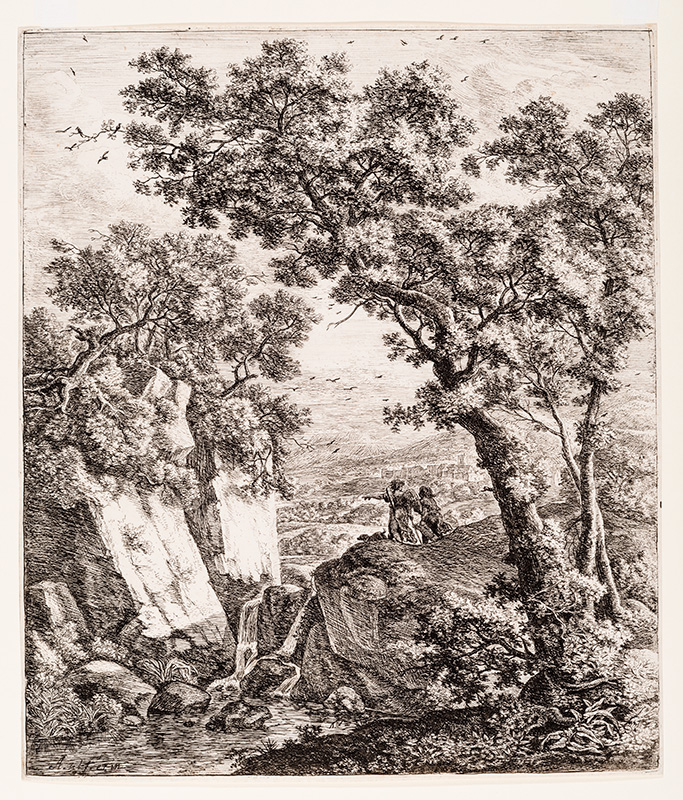
Anthonie Waterloo, Tobias and the Angel, c. 1659,
etching, 29.2 × 25.1 cm.
Collection of Dr.Jonathan Meakins and Dr. Jacqueline McClaran
Photo: Denis Farley
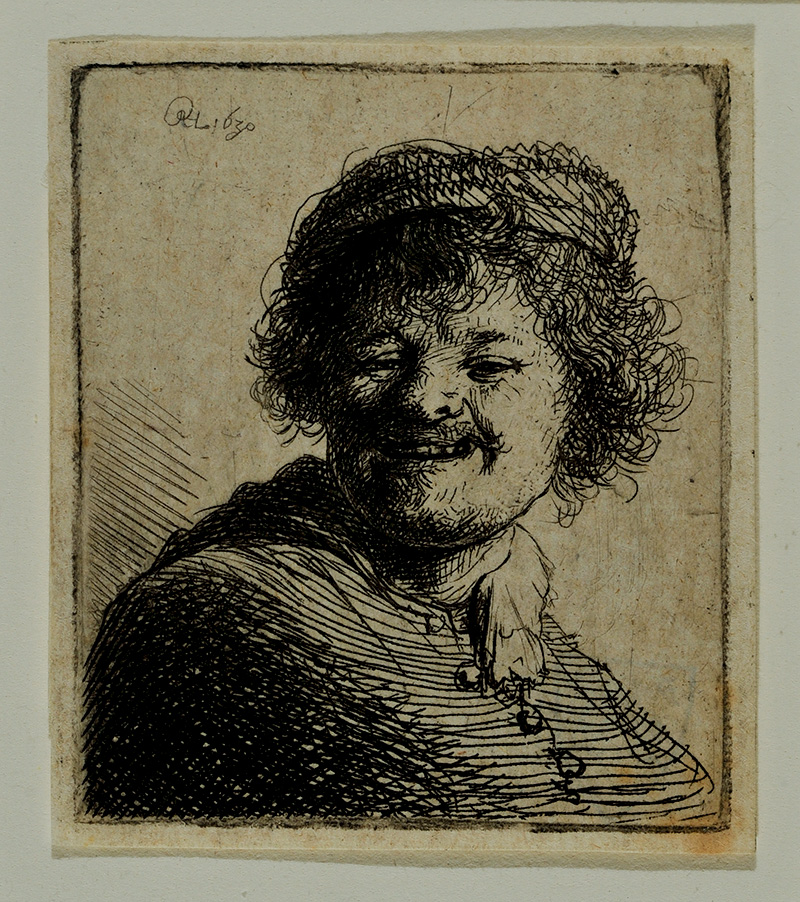
Rembrandt van Rijn, Self-portrait in a Cap, Laughing, 1630,
etching with drypoint, plate: 5 × 4.2 cm; sheet: 5.2 × 4.7 cm.
Collection of Dr. Jonathan Meakins and Dr. Jacqueline McClaran
Photo: Denis Farley
“When choosing exhibitions, the museum aims to strike a balance between contemporary and historical art practices in North America, as well as critical visual art movements through the centuries from around the world,” explains Dr. Curtis Collins, AAM director and chief curator. “The museum is incredibly fortunate to have a facility that can house such a valuable and extensive collection. Dutch masters, like the ones featured, are rarely seen west of Toronto, and never [before] in B.C., on this scale.”
This unique collection of prints evolved naturally over 40 years. The collectors, Dr. Jonathan Meakins, an officer of the Order of Canada and former head of surgery at McGill University Health Centre, and Dr. Jacqueline McClaran, the founder and first director of the McGill Centre for Studies in Aging, had an interest in landscapes, the striking beauty of the printed line against the white page, and a deep curiosity about the world.
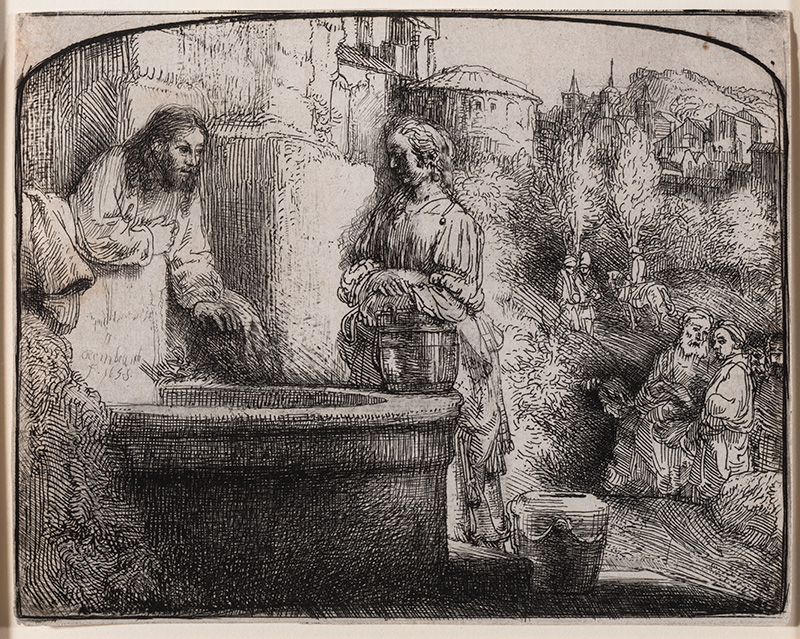
Rembrandt van Rijn, Christ and the Woman of Samaria, 1657–58
etching and drypoint, 12.6 × 16 cm ; trimmed inside platemark.
Collection of Dr. Jonathan Meakins and Dr. Jacqueline McClaran
Photo: Denis Farley
“The museum is honoured to host such an incredible exhibition that arcs across 200 years of printmaking and brings Jonathan and Jacqueline to experience our wonderful facility and incredible resort,” Collins says. “This is the second NGC exhibition at the Audain. They are an important partner in enabling us to bring such an extensive variety of art of national and international stature to Whistler.”
It was, in fact, a trip to France that brought the collection into being. That’s where the couple was drawn into the world of prints by the Danish-French impressionist painter Camille Pissarro, who admired the rural life. Today, the collection’s strength lies in 16th- and 17th-century Dutch and Flemish landscape and genre scenes, although four decades of evolving tastes give us a journey through the ages. Masters of the art of Northern European engraving include Dutch artists such as Rembrandt van Rijn, Hendrick Goltzius, and Jacob van Ruisdael.
The prints have been organized thematically into six sections: Cosmologies, The World in Landscape, Nature, Arcadia, The Carnival of Life and Coda.
In Cosmologies, we can see artists playing with ideas connected to the passage of time, life and death, faith, and science. There is an ebb and flow between the allegorical and naturalistic, which can be seen in the magnificent series of engravings, The Seven Planets: Mercury, 1585, by Jan Sadeler I after Maarten de Vos.
Landscape became an independent genre in the 17th century, and the Dutch and Flemish countryside takes pride of place in the Meakins-McClaran collection. “The wonderful range of landscape-based images in this exhibition offers the viewer a glimpse of rural life in the Netherlands during an era when European agrarian practices were being exported to North America. And in such a context, these prints offer a unique perspective on the origins of Canada’s entry into Western social structures,” says Collins.
This dovetails into the third section of the exhibition, Nature, which is portrayed in atmospheric scenes of sunlit fields of wheat, picturesque country roads, and majestic trees.
Trees were of particular interest to Dutch printmakers as they were ideal for combining various linear shading techniques in creating undulating forms that offer a dramatic setting for the religious subject matter. Anthonie Waterloo’s Tobias and the Angel, circa 1659, is the perfect example of how natural forms frame a scene from the Old Testament.
Pastoral scenes dominate the Arcadia section, which evokes the notion of rustic paradise. The landscapes often feature a prosperous countryside populated with dignified-looking cattle, milkmaids, and shepherds.
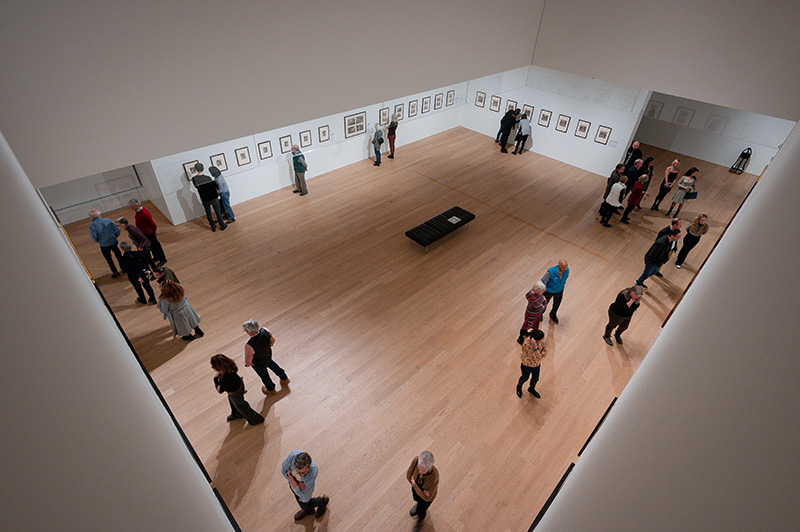
The Collectors’ Cosmos: Exploring The Meakins-McClaran Print Collection – VIP TOUR
Photo Scott Brammer
The next section feels particularly at home in Whistler, given its celebratory nature. The Carnival of Life features village fairs, feast days, and drunken tavern gatherings. It showcases the universality of humour and the comic character of everyday life in the Netherlands in the 16th and 17th centuries.
“Printmaking in Europe from the 1600s onward was an important way to communicate social, political, religious, and cultural ideas to a broad public,” explains Collins. “Today’s equivalent might be Instagram or TikTok.”
It was printmaking that allowed collecting and appreciating art to become a pastime that the middle class could finally indulge in. Before this, only the wealthy could afford to commission original paintings. With printmaking, artists were able to mass-produce their work and bring it to a wider audience. According to Elyse Feaver, AAM engagement and volunteer manager, printmaking “democratized art collecting."
The number of prints made from a single copper plate would depend on the popularity of the artist and the subject matter. Usually, print runs for the first four states (like an “edition” in book publishing) would be in the hundreds until the plate broke down. Popular prints might run up to 12 states. However, not all prints created from the same original etching or engraving would look the same. The artist often altered the plate between print runs to update or improve the original. Also, the amount of ink transferred to the paper would vary between print runs as the grooves in the copper changed in depth. This resulted in different prints from the same copper plate. It's interesting to see two unique prints of the popular image Bust of a Laughing Peasant by Adriaen van Ostade side by side — one from the fourth state, one from the seventh, with the levels of ink making them remarkably distinct.
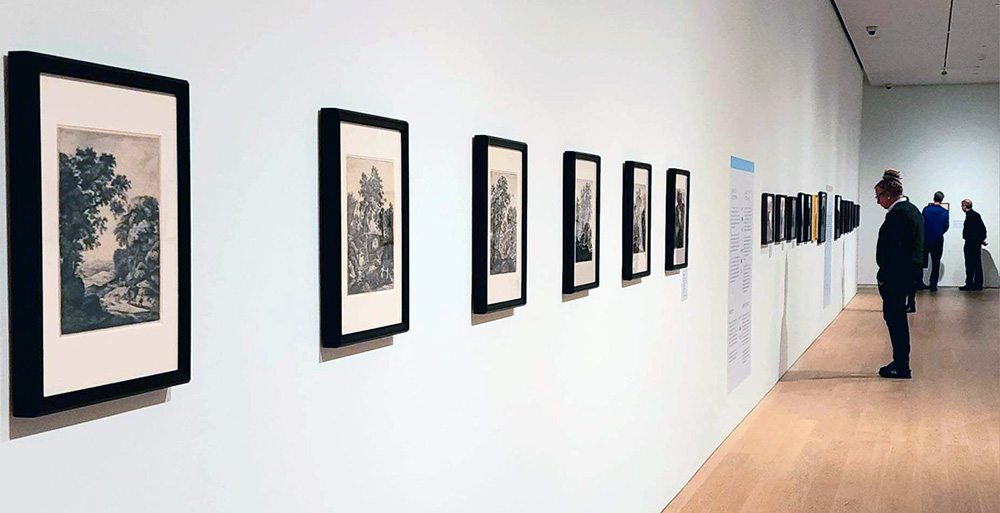
It’s impossible not to mention 17th-century Dutch prints without referencing Rembrandt, an artist who thought deeply about what it means to be human, giving his work a unique, emotional depth. The Meakins-McClaran collection has nine of his works, seven of which will be on display at the AAM, including a self-portrait that depicts him chuckling away. “Rembrandt was the leading printmaker in Europe during the 1600s and was known for his innovative use of the medium. Visitors to the museum will marvel at the incredible expressiveness of his lines,” said an exuberant Collins.
The Collector’s Cosmos: Exploring The Meakins-McClaran Print Collection is on exhibit through May 15, with print workshops will for children and adults taking place throughout its run.
The AAM also offers docent tours of its permanent collection and special exhibitions, making this rare experience even richer.
— With files from Katherine Fawcett
audainartmuseum.com | 604-962-0413

